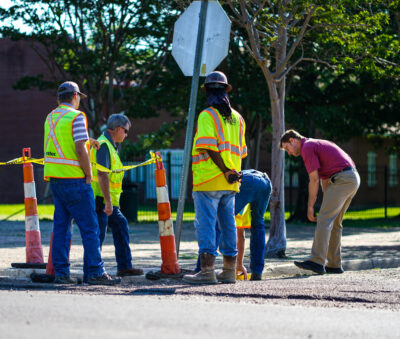How Mississippi Is Changing its Tune on Criminal Justice Reform

Over the last 15 years, Mississippi has passed several criminal justice reform laws to reduce recidivism and provide better results for offenders. In many ways, the state has shifted away from an extremely punitive approach to crime that had been the backdrop to the state’s approach to criminal justice for decades. But today, Mississippi has adopted several policies that seek to rehabilitate offenders and help them rejoin society as law-abiding, responsible, contributing adults.
The 2010s Were a Decade of Criminal Justice Reform in Mississippi
According to the latest Mississippi Department of Corrections Recidivism Report, the recidivism rate in Mississippi is 35.4%, suggesting the criminal justice system in Mississippi is not working for one-third of those who go through it. However, the latest recidivism rate is a dramatic improvement over previous figures. Earlier in the 2010s, Mississippi’s recidivism rate was much higher, one of the highest rates recorded in the nation.1

Photo by mcarthur beard/Shutterstock.com
In 2019, the Mississippi legislature passed the Mississippi Fresh Start Act. This law sought to expand employment opportunities for former offenders by preventing occupational licensing boards from creating policies that bar ex-offenders from holding certain jobs. The law empowers former offenders to leave prison, earn professional licenses, and rejoin the workforce.2
Mississippi Gov. Phil Bryant, a former law enforcement officer, signed another criminal justice reform bill that same day, expanding the state’s intervention courts and providing more alternatives to incarceration for offenders. That law also expanded mental health services, increased support for veterans, and added additional resources for drug and alcohol-addicted former offenders. The law also halted a former state practice that suspended driver’s licenses for unpaid legal fees and fines.
In 2014 and 2018, Mississippi also passed sweeping criminal justice reform measures. For example, one law retroactively expanded parole eligibility for non-criminal offenders and prevented people from going to prison simply because they couldn’t pay their fines. That set of laws also eliminated controversial mandatory minimum sentences. It significantly limited the likelihood of former offenders breaking parole through technical violations (many of which former offenders likely wouldn’t even know about). Finally, the 2014 and 2018 laws significantly restructured sentences for drug offenses and added prison programming (like education and job training efforts to help prepare offenders for life after prison).
The goals of the 2014, 2018, and 2019 laws were simple enough: to put fewer Mississippi residents behind bars while increasing former convicts’ chances of success after their release from prison. Mississippi has routinely taken first place in the nation for being the state with the highest per capita incarceration rate (575 per 100,000). The reforms are seen as an effort by the state to finally move away from its heavy-handed, incarceration-focused approach to law-breaking.3
Other Reforms in Mississippi that Identified the Problem, Implemented Solutions, and Obtained Results
At the onset of its reform efforts in 2013, Mississippi’s prison population had risen 307% between 1983 and 2013, with 75% of its prison population consisting of nonviolent offenders. In addition to the reform efforts cited earlier, news of the high incarceration rate within the state also inspired legislators to create new rehabilitation programs for nonviolent offenders, programs they could take part in as an alternative to serving a jail or prison sentence. The legislature also proposed new legislation in 2020 that would improve parole access by eliminating archaic laws denying access for technical reasons or for certain crimes.4

According to Gov. Bryant, who supported each set of legislation and signed them all into law, some positive results from the reforms included an 11% drop in the prison population and the state saving $46 million in incarceration costs. Another source highlighted that Mississippi’s prison population dropped by about 30,000 inmates between 2014 and 2020, the first time the prison population receded in years.
What Mississippi’s Success Could Mean for Other States
Mississippi has set an example by showing that workable, inmate-focused criminal justice and a more compassionate, effective, results-based approach to incarceration and reform are possible. Further, Mississippi, a deeply red state in the South, has also shown that criminal justice reform is non-partisan and that state legislatures of any political leanings should take on the mantle of improving the state’s criminal justice system and seeing to it that offenders get the care, rehabilitation, education, and effective reform that they need. Mississippi’s model should be replicated and implemented in other states as well.
Sources Cited:
- MDOC. “FY 2019 Annual Report.” Mississippi Department of Corrections, 2019. mdoc.ms.gov
- USNews. “Mississippi Leads the Nation in Criminal Justice Reform.” U.S. News, 2019. usnews.com
- TSP. “U.S. Criminal Justice Data.” The Sentencing Project, 2023. sentencingproject.org
- NCJ. “Criminal Justice Reform in Mississippi.” Nolan Center for Justice, 2020. conservativejusticereform.org




